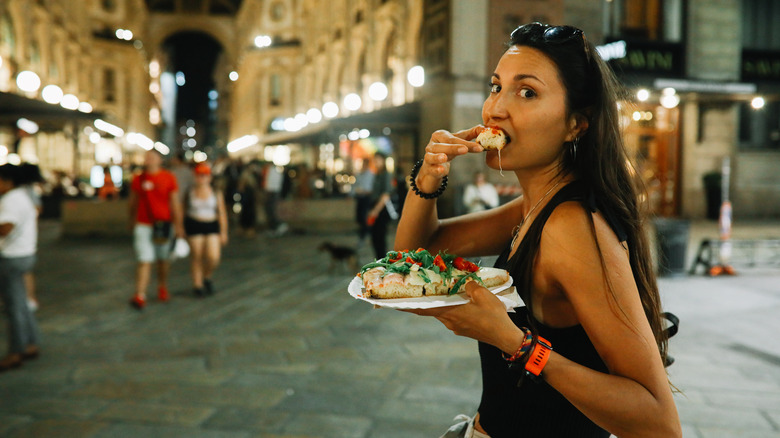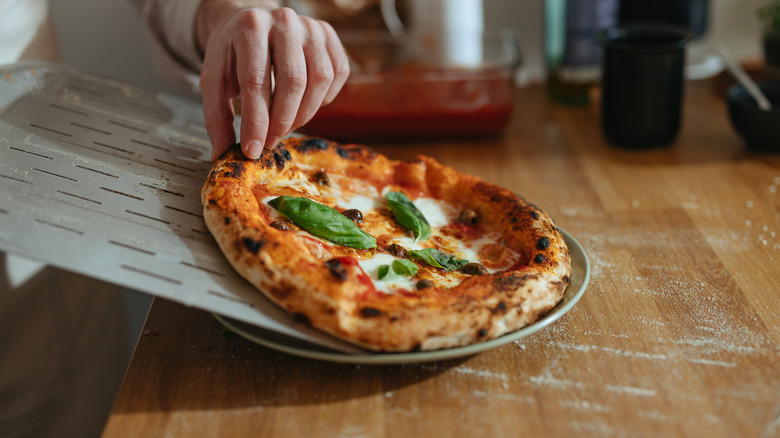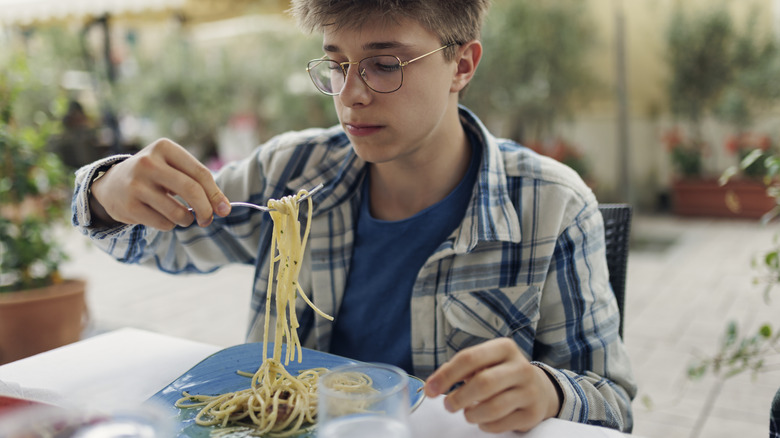The Delicious, Iconic Dip Tourists Will Look Silly Requesting At A Restaurant In Italy
When it comes to dining and cuisine, Italy generally takes the crown as one of the most sought-after and beloved destinations for foodie travelers looking to indulge their senses and taste buds. Whether it's a hearty plate of pasta in Rome, a generous serving of risotto in Milan, or even a scoop of the best world-class gelato for an afternoon pick-me-up, the truth is that there are plenty of must-try dishes and meals all across the country that range from savory to sweet — all so you can make the most of your international culinary experience.
However, the reality of dining in Italy is that it's generally very different from what you get at, say, an Italian-American restaurant. After all, Italians don't do "Italian food" like the Americans do — especially when it comes to authenticity. Because, beyond ingredients, there are certain dining habits that might feel normal back home ... but can actually be considered a faux pas for a majority of locals once you step foot in Italy.
One of the most common requests that drives Italian servers and chefs a little bit pazzo — that's Italian for "mad" — is the very American habit of requesting a side of dipping sauce for their pizza crust. Want to make things worse? Try asking for a side of ranch sauce — and watch as the cackles start to echo through the restaurant.
There's no such thing as pizza dipping sauce in Italy
Sure, Papa John's might be popular and well known for its BBQ and garlic dips in the U.S. — it's basically a delivery staple, after all! However, the truth is that you shouldn't expect the same kind of condiments or add-ons while in Italy — especially not at traditional local eateries. After all, most locals believe that if a pizza needs to be dipped in order to be enjoyed, it just wasn't prepared well enough to begin with.
Instead, you'll want to eat and enjoy your pizza like the Italians do. So how does that work? Once your waiter brings you your meal, simply cut up the entire pie into small, manageable slices (no, pizza doesn't come ready-cut in Italy) and eat each one in all of its natural and unadulterated glory. We promise it'll be simple, delicious, and very authentic. And if you're still craving a little something extra, go ahead and ask for some olio santo or olio di peperoncino, aka chili oil. Just be careful — it's got some kick!
Alternatively, you can also do as Food Network star and chef Silvia Baldini does and simply ditch the crust entirely (via The Independent). After all, that extra bit of dough is nothing more than a handy vessel to help get the pizza from your plate and into your mouth. Plus, not eating it leaves even more room for the good stuff (and desert, of course).
Other mistakes to avoid while dining in Italy
Aside from the pizza-dipping sacrilege, there are plenty of other no-no's that'll single you out as a foreigner in Italy almost immediately. For starters, things like salad dressings (especially "Italian dressing") are non-existent, and you'll only be embarrassing yourself by asking for some. Instead, locals prefer a combination of oil and vinegar that doesn't take away from the real flavors of the food. As for other condiments, use them sparingly.
Furthermore, another classic mistake that people unknowingly make is asking for substitutions when they don't have an allergy or dietary restriction. While accommodating allergies is typically fine, asking the chef to change something because you simply "don't like it" is basically disrespecting their culinary expertise. Lastly, another faux pas includes ordering food without considering the proper sequence of courses in an Italian meal. In restaurants, you typically get four courses: antipasti, primi, secondi, and dolci. While you don't have to order all four, ordering a secondi before an antipasti (for example) will out you as a tourist.
Drinks aren't immune to mistakes, either. One of the most embarrassing drink-related mistakes to avoid in Italy is trying to order a cappuccino any time after breakfast. What's wrong with that? Well, per locals, the drink simply has too much milk, which makes it harder to digest comfortably as the day goes on. The same goes for drinking a cocktail with your meal. Ideally, you'll want to save the spritz before you eat, along with a light snack, and enjoy your meal alongside a glass of wine instead.


